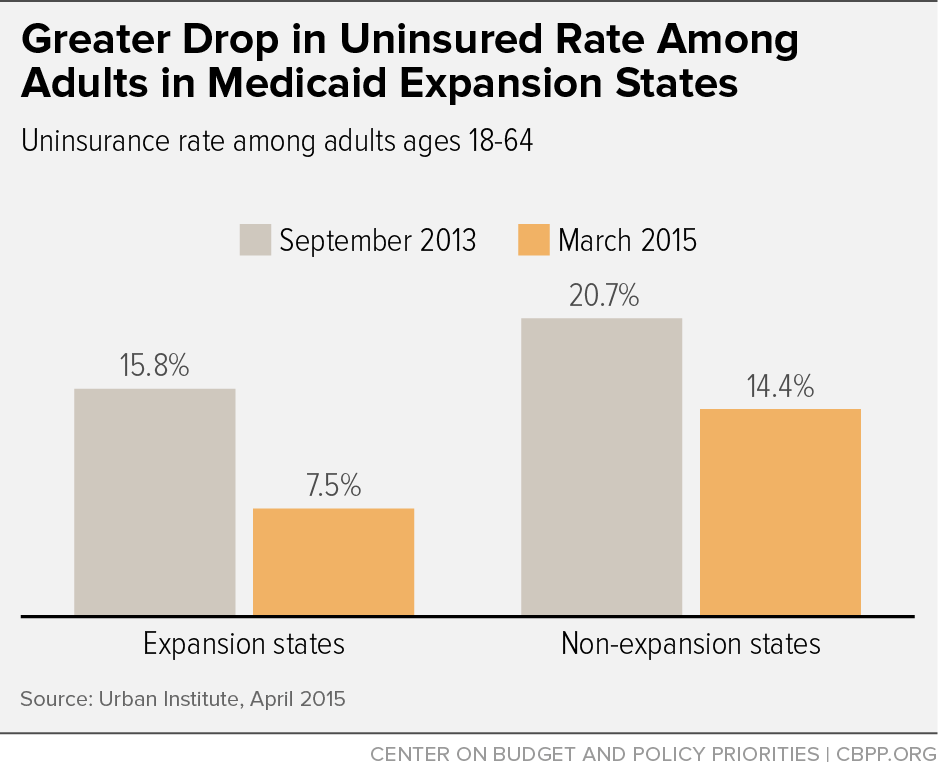BEYOND THE NUMBERS
Medicaid at 50: Medicaid Expansion Opens Door to Health Coverage for Low-Income Adults
Health reform’s Medicaid expansion has made affordable and comprehensive health coverage available for the first time to millions of low-income adults, a group that previously lacked options for public or private coverage. In fact, Medicaid expansion is building on the program’s 50-year record of expanding vulnerable populations’ access to health care.
Health reform raises Medicaid’s eligibility level for low-income adults to 138 percent of the poverty line (about $16,200 a year for an individual and $27,700 for a family of three). Three-fifths of adults earning less than 138 percent of poverty are working or in families with full- or part-time workers. Yet before health reform took effect, 81 percent of these workers didn’t have access to affordable coverage through their employer. Purchasing coverage in the pre-health reform individual market was prohibitively expensive.
Expansion has had a dramatic positive impact on beneficiaries; 28 states and Washington, D.C., have implemented the expansion. The share of non-elderly adults without coverage has fallen from 15.8 percent to 7.5 percent — a drop of 53 percent — in states that have expanded, compared with a drop of 31 percent (from 20.7 percent to 14.4 percent) in states that haven’t, the Urban Institute found (see chart). And 92 percent of those who have gained Medicaid coverage since health reform took effect are satisfied with it, The Commonwealth Fund found.
In states that haven’t expanded Medicaid, eligibility for poor adults remains extremely limited. In the typical non-expansion state, parents only qualify if they have incomes less than 45 percent of the poverty line, or less than $9,000 a year for a family of three. And there’s no Medicaid coverage for adults without children. There are 3.7 million uninsured adults caught in this “coverage gap” in non-expansion states, with incomes too high for Medicaid, but too low for subsidies to purchase marketplace coverage.
States can expand Medicaid at any time, but the sooner they do so, the better. The federal government is paying the entire cost of covering new enrollees under the expansion through 2016 (and no less than 90 percent in the years thereafter), and states can start achieving savings from spending less on programs serving the uninsured. That’s why the expansion has saved states hundreds of millions of dollars in just over a year.
As Medicaid turns 50 this year, it’s improving health care for working adults with low incomes just as it’s done for children, seniors, pregnant women, and persons with disabilities over its history.
As Medicaid turns 50, learn more about how it improves access to health care, its long-term benefits, and why states should expand Medicaid: www.cbpp.org/medicaid-at-50

